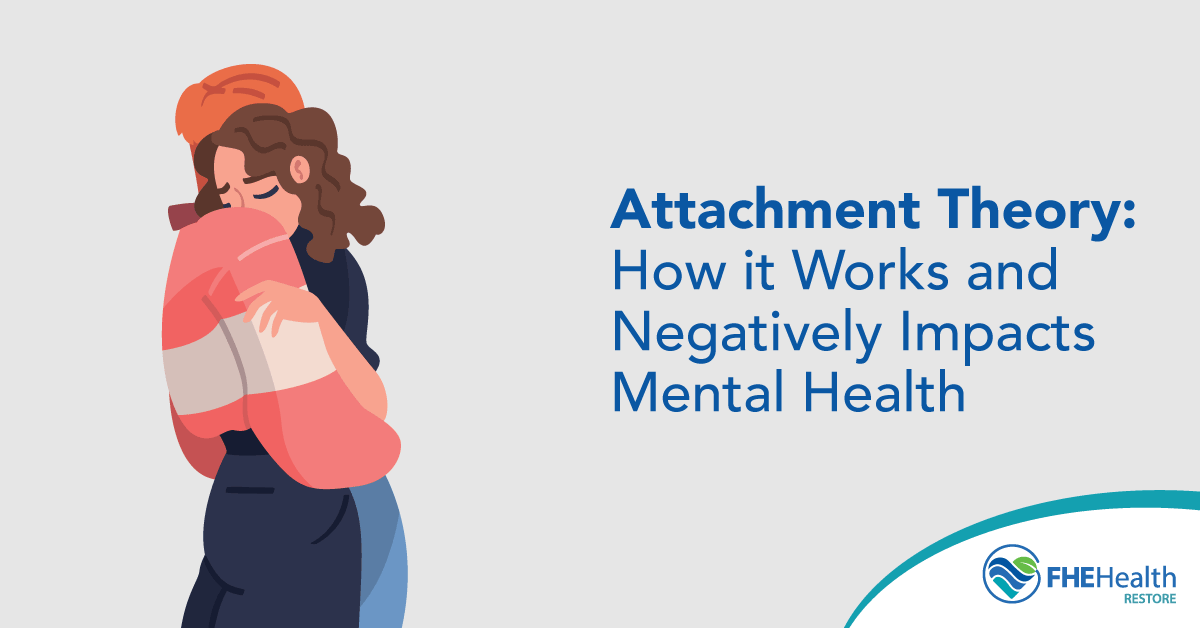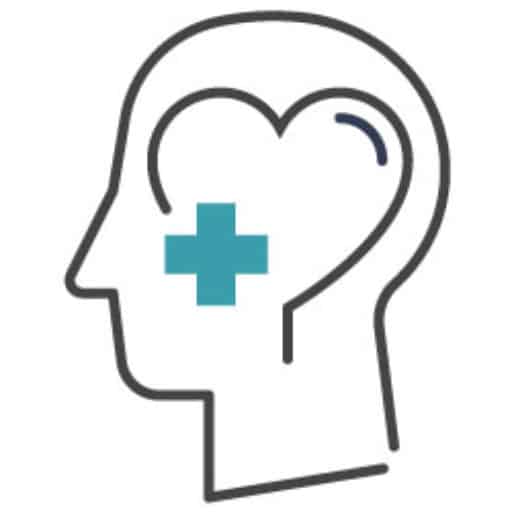Do you ever wonder why some people seem to have a wide variety of healthy relationships, while others struggle to trust and avoid forming friendships? The way we react when we get close to someone says a lot about the bonds we formed with our parents or caregiver when we were little. If these early ties are disrupted and basic needs aren’t met, it can lead to insecurities and mental health conditions, such as reactive attachment disorder. This article explores attachment theory and how our first relationships affect those throughout our lives.
What Is Attachment Theory?
The attachment theory was developed by British psychologist John Bowlby in 1950. It explains how early bonds can shape behaviors in later relationships. Babies are born with a need to connect with caregivers to have their emotional and physical needs met. When this happens, it creates a safe atmosphere for the child to learn and grow. If needs aren’t met, feelings of insecurity, attachment issues and a lack of trust in others develop instead.
The Four Main Attachment Styles
Mary Ainsworth, Bowlby’s colleague, expanded on his research with her own study called the Strange Situation. It explained that when children are removed from their parents and placed in an unfamiliar setting, they react in one of four ways when reunited. These reactions are referred to as attachment styles.
- Secure attachment. A secure attachment is the most common attachment style. Research shows that approximately 56% of individuals are securely attached. These individuals are warm and easy to connect with. They are aware of their feelings and know how to communicate needs and desires effectively. They tend to be happy in relationships and rarely worry about being abandoned.
- Anxious-preoccupied attachment. Anxious-preoccupied attachment develops when needs are inconsistently met. Caregivers are usually warm but can sometimes be neglectful. The child worries about whether their needs will be met and tends to be clingy. As adults, they fear abandonment and often seek constant reassurance from partners.
- Dismissive-avoidant attachment. Dismissive-avoidant attachment arises when caregivers are consistently distant and neglectful. Children may be punished when they reach out for comfort and attention. As adults, they become strongly independent and uncomfortable with closeness and may shut down when others try to get close.
- Fearful-avoidant detachment. Fearful-avoidant or disorganized attachment is the most complex type. It develops when a child experiences ongoing abuse or neglect, making caregivers a source of fear. As adults, they struggle to trust others and desire intimacy but are afraid to seek it.
How Early Attachment Shapes Adult Mental Health
From infancy through adolescence, our experiences shape how we perceive ourselves and influence our behavior in forming friendships and relationships. These connections lay the foundation for our mental health. If you experience love and acceptance as a child, you tend to be confident and can form healthy relationships. Those who receive needed support tend to be more resilient, while those who are criticized and neglected tend to have low self-worth. Adverse childhood experiences, such as abuse or exposure to domestic violence, can have a long-term effect on mental health. Adults with higher ACE scores tend to be at a greater risk for developing depression, PTSD, anxiety and even physical health issues.
Negative Impacts of Insecure Attachment Patterns
Individuals with attachment issues may find it more difficult to manage their emotions. They’re also more likely to develop mental health problems, including:
- Anxiety and depression. Worry and fear of being abandoned can lead to anxiety and panic attacks. Those with anxiety attachment styles may also struggle with feelings of loneliness and depression.
- Low self-esteem. All insecure attachment styles can lead to a lack of self-worth. Those with anxiety may feel they aren’t good enough to keep someone, while those with avoidant attachment styles tend to feel unlovable, which is why they avoid getting close to others.
- Poor relationships. Fear of commitment, codependency, jealousy and the inability to trust others are all symptoms of someone with an insecure attachment style. Because feelings happen with every relationship, the person is often left feeling disappointed and hurt.
- Severe mental health conditions. Children who are neglected and experience trauma are more likely to go on to develop severe mental illnesses. One rare mental health disorder is reactive attachment disorder. A person with this condition is unable to form strong bonds with anybody and is often seen as a loner.
Addressing Reactive Attachment Disorder Wounds in Therapy
Reactive attachment disorder can create lasting wounds that require intervention from a therapist or mental health professional. Unlike general attachment issues, reactive attachment disorder makes it hard to trust and build an emotional connection with others. Therapy focuses on teaching individuals how to feel more secure in their relationships. Some of the most common approaches in therapy include:
- Trauma-informed care. TIC helps an individual uncover past trauma while creating a safe, supportive and trusting environment. Unlike traditional medication, where the physician uncovers what’s wrong, TIC focuses on what happened without re-triggering past painful experiences.
- Research-based therapies. A counselor or therapist can help you explore when your attachment issues began and help you overcome those negative feelings. Emotionally focused therapy can help teach you how to regulate your emotions and communicate your needs effectively. For children, dyadic-developmental psychotherapy helps a therapist connect with a child through PACE. The therapist then teaches the parent or caregiver how to make the child feel more secure.
- Emotional regulation. Individuals with reactive attachment disorder often have a difficult time managing emotions. Therapy can help you identify your feelings and develop healthy coping mechanisms.
Healing Through Secure Relationships and Support
While therapy is one of the best ways to heal from attachment issues, you can also develop a secure attachment through new and healthy relationships. Choose a supportive partner, close friend or family member who provides consistent and loving support. Over time, you’ll replace the fear of intimacy with trust.
Getting Help With Mental Health Issues
To get help with reactive attachment disorder and other mental health issues, contact Restore Mental Health to explore your options.



